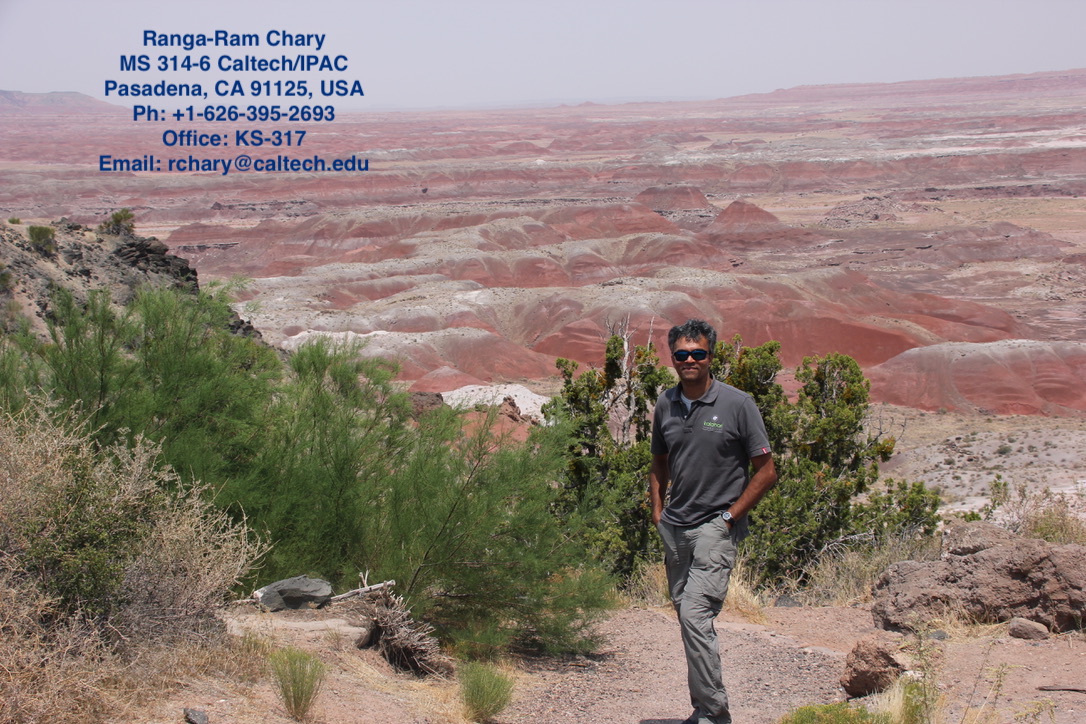
Educational Background:
NICMOS Postdoctoral Fellow and UC Regents Fellow, University of California, Santa Cruz, 1999-2002.
Ph.D., Astronomy & Astrophysics, University of California, Los Angeles, 1999.
B. Engineering, Computer Science & Engineering, Regional Engineering College (Now called National Institute of Technology), Trichy, India, 1995.
Research Interests:
I am an observational cosmologist working in the fields of reionization, galaxy evolution, cluster cosmology and cosmic backgrounds. My group is active in science with Planck, Euclid, Herschel and the Spitzer Space Telescope in addition to a range of ground-based astronomical observation facilities such as Palomar, Keck, CSO, CARMA and ALMA. We are also involved in developing the next generation of small explorer missions in collaboration with JPL.
Specifically, we are measuring the properties of star-forming galaxies out to the highest redshifts, and in conjunction with studies of gamma-ray burst number densities and Type Ia supernovae, attempting to understand fundamental properties of galaxies, such as how they grow their stellar mass and metallicity, what is the stellar mass function therein, when does dust begin to play a significant role in their energetics and what fuels the star-formation as a function of cosmic time. We are using these measurements to provide, among other things, better constraints on the reionization history of the Universe between redshifts of 6 and 20 (the first billion years of time), which is arguably the most important astrophysical event since the Big Bang.
We are also using objects at the extreme end of the dark matter mass function, i.e. galaxy clusters, as a probe of the structure of the Universe. By measuring cluster masses over the last half of cosmic time (z<1) using galaxy dynamics and the Sunyaev-Zeldovich effect, we can constrain the equation of state of dark energy and non-Gaussianity in the primordial density fluctuation field, two quantities which are parametric representations of the evolution of our Universe. Our most recent efforts have measured spectral anomalies at the 10 parts per million in the cosmic microwave background to observationally constrain the existence of alternate universes with physical properties different than our own.
Of late, we have developed a mission concept to identify the electromagnetic counterparts of gravitational wave events that are being detected by Advanced LIGO and Virgo.
We attempt to be multiwavelength in our research, using the observational facilities which are most appropriate to the scientific question at hand and which minimizes the biases that might result by only utilizing a single part of the electromagnetic spectrum. We also make extensive use of powerful computers to undertake Monte-Carlo simulations and tease out signals from the data.
Between 2010 and close-out in 2018, I served as the Project Scientist and Project Manager of the U.S. Planck Data Center at Caltech and since 2013, I am the P.I. of one of the 3 U.S. Science Teams on Euclid.
Outside of work, I'm up for a game of any racquet sport, a round of golf, scuba diving, hiking/climbing or traveling to locations off the beaten track.
Publications through NASA ADSResearch Recreation CV